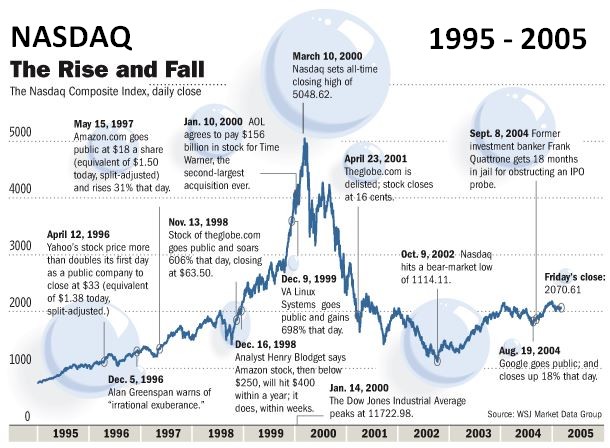The world is driven by economics and trade. A quick look at the dominant economies, and the economies of the most populous countries is given here. It shows how the machinery of global “wealth” is measured today. It would be helpful to focus on Bio Capacity data to the same degree, to see where resource wealth resides. What is more important? Greater absolute profits or greater productivity per capita? Concentrated wealth or better living standards? Grim old-fashioned capitalism needs a major face lift. Why focus on GDP growth only, when Sustainability and Bio Capacity are more important?.
A – GROSS DOMESTIC PRODUCT per CAPITA
Top 20 countries by GDP are listed here.
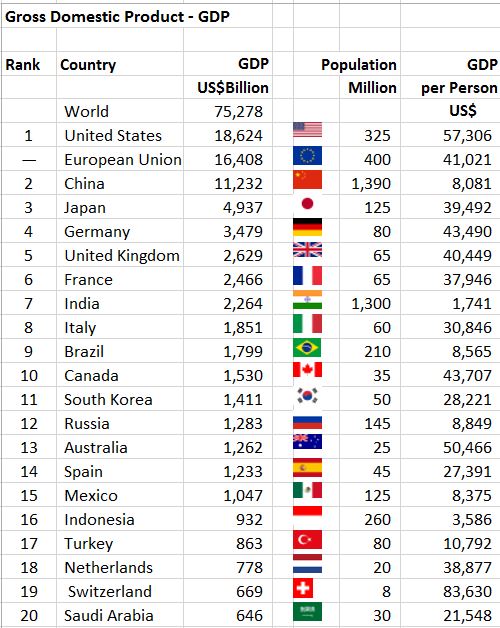
| Wikipedia reference: “Report for Selected Country Groups and Subjects”. World Economic Outlook. International Monetary Fund. October 2016. |
Lowest GDP per Person: Most populous countries with lower end GDP per person are listed next. The potential for political tension may be higher in these countries, due to their size and relative economic weakness, and gaps between rich and poor citizens.
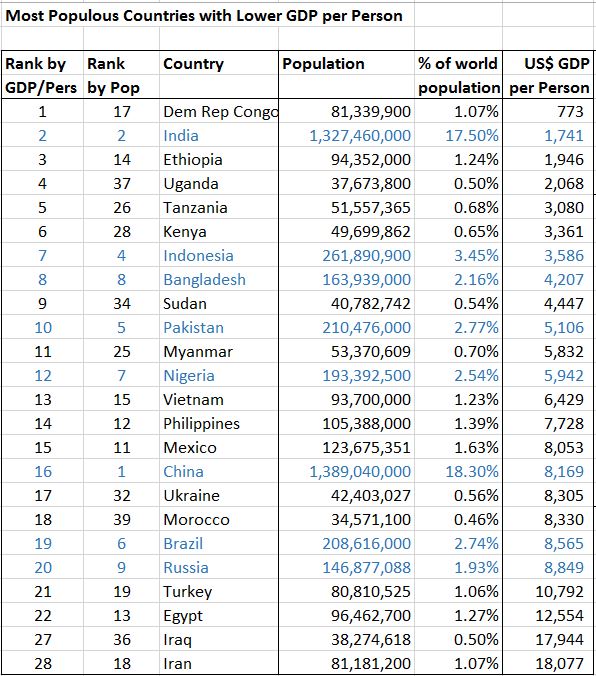
Populous countries with higher GDP are omitted in the second chart, namely, USA, Japan, Germany, France, UK, Italy, S. Korea, Spain, Argentina, Poland, and Saudi Arabia. These are countries which appear in the first chart.
The numbers are a rough framework for the distribution of the world’s money and people. The charts fail to show the disparity between rich and poor in many of the most populous places, like India, China, Indonesia, Nigeria, Mexico, Brazil, Pakistan, … and others, like the USA, where not all can afford health care.
Return to the top
A visual version of GDP per Capita: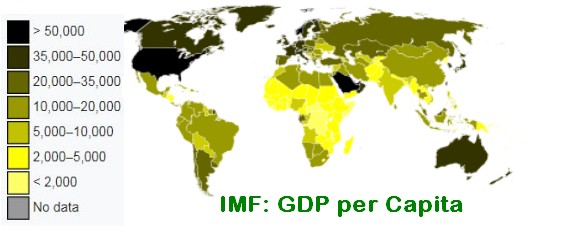
Source: Wikipedia GDP per Capita.
Trade Agreements
- without reciprocity,
- without labor standards,
- without environmental regulations
International trade agreements are baffling. Many of them are without reciprocity. Less expensive goods can enter a rich country without duties, but expensive goods are barred by high tariffs from entering a poorer country. Think China and the USA.
Importing inexpensive goods creates great buying opportunites for the people in the rich country, at the expense of underpaid laborers in the poorer country. Replace China with Bangladesh or Indonesia or Brazil, and the equation remains the same. Throw in a lack of environmental and labor standards in the poorer countries and the whole equation becomes even more lopsided.

Source: Citibank mapping of global trade flows. Click through to find larger, easier to read maps, and the Citibank objectives in the study. A visual view of intensive world trade, which has not helped least developed countries. Rather, it depletes resources in poor countries and pays slave wages. How long will the disenfranchised wait before the next round of revolutions?
And why do those poorer countries accept the depletion of their resources and the low wages of their citizens? Well someone is getting RICH. Just not everyone at the same pace. It is reminiscent of the Age of Imperialism. Visit China Labor Watch.org for incisive reports on factory conditions in China, and the big US companies who produce products there. Wages are in the range of $1.56 / hour or $12.50 /day. Overtime is frequent, as are crowded dormitories.
The World has Finite Resources
_______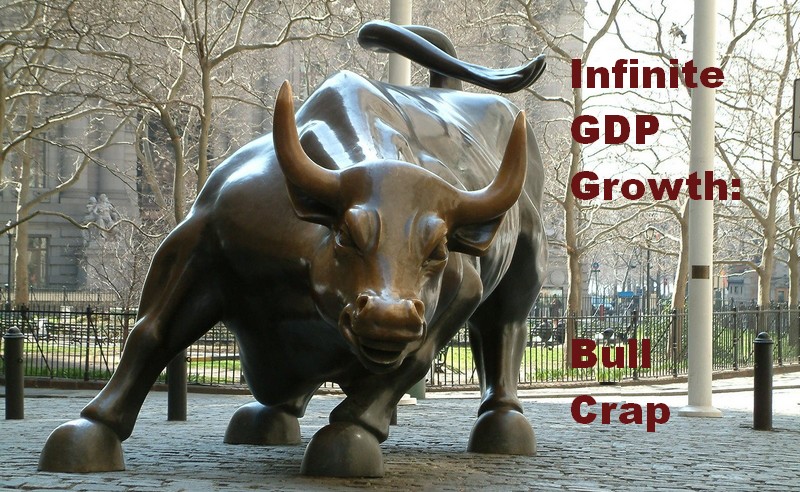
C – CAPITALISM and WAYS TO MODIFY IT
Capitalism is the most popular form of economics. Even in feudalism, with ownership by the aristocracy of land and the service of people, a merchant class arose, and with them, banking. That is, lending with interest rates. Communist regimes like Russia and China have evolved back into forms of capitalism, allowing ownership, bank lending and trade in goods without government intervention at every step. Capitalism is everywhere.
Unfortunately, capitalism also tends to concentrate money and power in the hands of a few individuals, whom we can call the 1%. It may be better to say the 0.01%, when looking at the global imbalance of wealth among people. Further, capitalism is inherently short term in its quest for profits. Longer term impacts like sustainability are simply not measures of success in capitalism.

Growing Awareness of Problems Among Capitalists
Even successful invesment managers are now telling their peers in the financial community that capitalism and sustainability are not aligned. Here is a quote by well-known investor Jeremy Grantham : “Capitalism does a million things much better than a command economy, except for sustainability. Corporations simply aren’t paid to give up today’s profits in favor of the longer-term profits. And sustainability gets right to the heart of long-term thinking.” More can be read about his message to his coleagues in this Barron’s article: Taking On Climate Change.
How can the imbalances in wealth and trade be addressed? Through:
- Ethical Capitalism or Sustainable Capitalism
- Taxation rates dependent on whether an activity
is, or is not, Sustainable (carbon tax & dividends).
- Enforcement of Human Rights across countries
END WORLD WAGE SLAVERY
- A World minimum wage of $5 / hour,
vs the $1 – $2 / hour common in poorer countries. - Legislation to prevent companies from buying products
from countries that do not support a fair minimum wage. - Boycott goods from countries who pay wages of $1.50 / hour,
like China and Bangladesh - A living wage adds low percent cost to a luxury product like the clothes and electronics used by the west.
- Visit the Wage Slavery page for more on this subject,
and links to the organizations fighting it.
___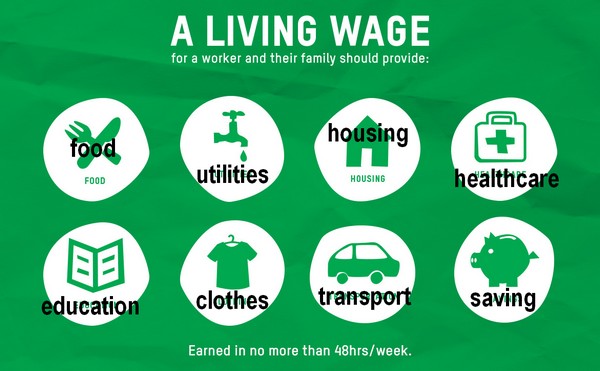
- Philanthropy, NGOs, Education for all
- Actively promoting good causes; advocacy
- Other ways, still to be found
Return to the top
D – FIAT CURRENCIES and FALSE ECONOMICS
After writing this section, an awesome article was found at David Stockman’s blog, Contra Corner. Stockman was in charge of the Reagan-era Budget Office for the US (OMB). He writes today about the delusions of the Fed, who have been printing money non-stop, and the profligate spending of MAGA (Trump). One theme is that “wealth” has increased much faster than actual incomes, reflecting a financial bubble. All of this is explained much more elegantly in the article referenced. Financial assets outpacing real income growth is seen in data from the US Bureau of Economic Analysis (BEA), which is ironically a branch of the Federal Reserve Board.
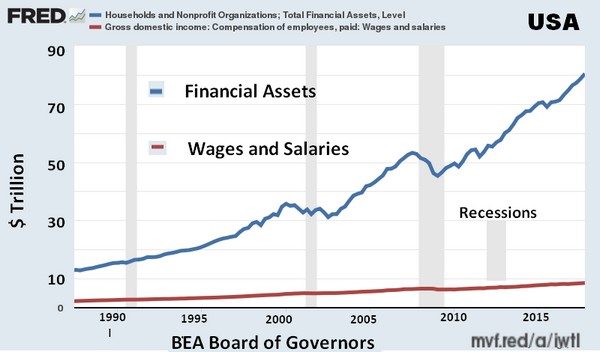
From Stockman, onto my own views: It is hard to think of finance without thinking lies, outright lies and more lies. Why is this view so negative? The financial and banking crisis of 2008 – 2009 comes to mind. It’s still hard to believe that no one went to jail for that rip-off of the public purse. More recently there has been a breakout of Bitcoin, a fiat currency with a history of illegal transactions and wild speculation. So forgive the negativity – it is part of the effort to put the struggles for balance in world resources into perspective.
FIAT CURRECY – What is This?
It’s not a type of car. It refers to a currency which has no tangible asset as a foundation. Most countries of the world dropped gold as base for their currencies many decades ago. Now the currencies are just floating around willy nilly, with valuations based on state debts and percieved economic strength. A good sign of this is:
QUANTITATIVE EASING – What is This?
QE II is not a type of ship. It is more like printing money out of thin air, then using one’s reputation to sell debt inside and outside a country. There was a lot of it post 2008, and it will be paid for … eventually.
Consider the devaluation of Roman coins, toward the collapse of the empire, by cutting them with base metals. Consider the hyper-inflation of Germany around World War I and the subsequent depression there. These things do not end well. The Dark Ages and World War II, were at least partly due to a lack of confidence in currency, and scarcity of resources, for people who previously had enough on which to live.
The next economic crash (and there will be one) will be a good opportunity to straighten out the rules of world currencies, by putting fiat money to rest forever. As can be expected, rich people tend to oppose change, so when many of them become poor and are hurting from a market crash, it would be a good time to restore confidence in currency through a tangible asset base like gold. Wealthy countries actually have a ton of gold, literally. A gold standard would go a long way toward creating a sustainable economy, and a sustainable planet.
Also, it would be a good idea to prohibit options and derivatives trading. Only the traders get rich, and in doing so, destabilize world financial markets. Prohibit is a synonym for “make it illegal” in this context. Remember the Dot Com Bubble?


